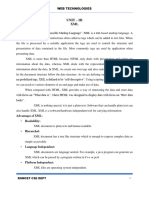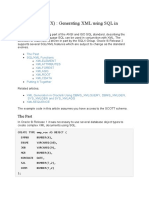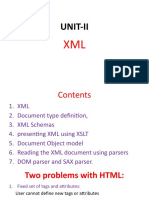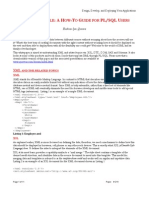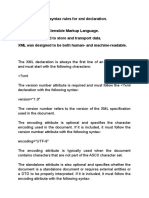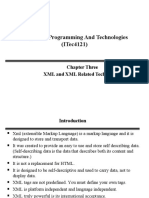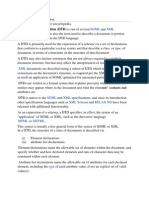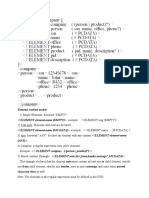0% found this document useful (0 votes)
20 views13 pagesUNIT-3 XML Examples DTD XSD XSLT JDBC
The document provides multiple examples of XML Document Type Definitions (DTD) and their usage, including external and internal DTDs, enumerated datatypes, entity declarations, XML namespaces, and referencing schemas. It also includes examples of XML documents and XSLT stylesheets for data retrieval, as well as Java code snippets for interacting with a database using JDBC. The document serves as a comprehensive guide for understanding XML structure and database operations.
Uploaded by
vijaya51goodCopyright
© © All Rights Reserved
We take content rights seriously. If you suspect this is your content, claim it here.
Available Formats
Download as PDF, TXT or read online on Scribd
0% found this document useful (0 votes)
20 views13 pagesUNIT-3 XML Examples DTD XSD XSLT JDBC
The document provides multiple examples of XML Document Type Definitions (DTD) and their usage, including external and internal DTDs, enumerated datatypes, entity declarations, XML namespaces, and referencing schemas. It also includes examples of XML documents and XSLT stylesheets for data retrieval, as well as Java code snippets for interacting with a database using JDBC. The document serves as a comprehensive guide for understanding XML structure and database operations.
Uploaded by
vijaya51goodCopyright
© © All Rights Reserved
We take content rights seriously. If you suspect this is your content, claim it here.
Available Formats
Download as PDF, TXT or read online on Scribd
/ 13





